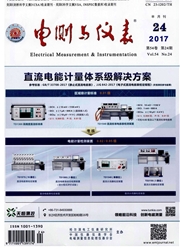

 中文摘要:
中文摘要:
矩阵变换器具有网侧功率因数和输出电压频率灵活可调、输入电流谐波低,能量双向流动,无中间直流环节等优势。文章首先分析了矩阵变换器拓扑结构、给出了矩阵变换器的交-直-交等效电路。详细的介绍了间接矢量调制技术实现过程,给出了实现过程的主要步骤,并且分析了不同步骤下关键参数的计算和选取原则。为了避免传统间接矢量调制存在两次切换以及对电流和电压波形质量造成不利影响等问题,对调制矢量占空比进行了优化配置。最后通过仿真软件对其进行仿真研究,并着重对矩阵变换器谐波进行仿真分析,结果验证了所研究的改进型间接矢量调制技术的有效性和可行性。
 英文摘要:
英文摘要:
Matrix converter is featured with adjustable gird side power factor and output voltage frequency, low input current harmonics, two-way flow of energy, without intermediate DC link and other advantages. This paper firstly analyzes the matrix converter topology structure and provides the AC-DC-AC equivalent circuit. It also introduces the process of indirect vector modulation technology implementation and different steps of the calculation on key parameters and selection principles in detail. In order to avoid the presence of traditional switching and indirect vector modulation shifting twice adversely and the effects of current and voltage waveform quality, this project has optimized the configuration of the modulation vector cycle. Finally, this paper studies the simulation through simulation software and analyzes the matrix converter harmonic simulation, and the result proves the effectiveness and feasibility of improved indirect vector modulation technology.
 同期刊论文项目
同期刊论文项目
 同项目期刊论文
同项目期刊论文
 期刊信息
期刊信息
